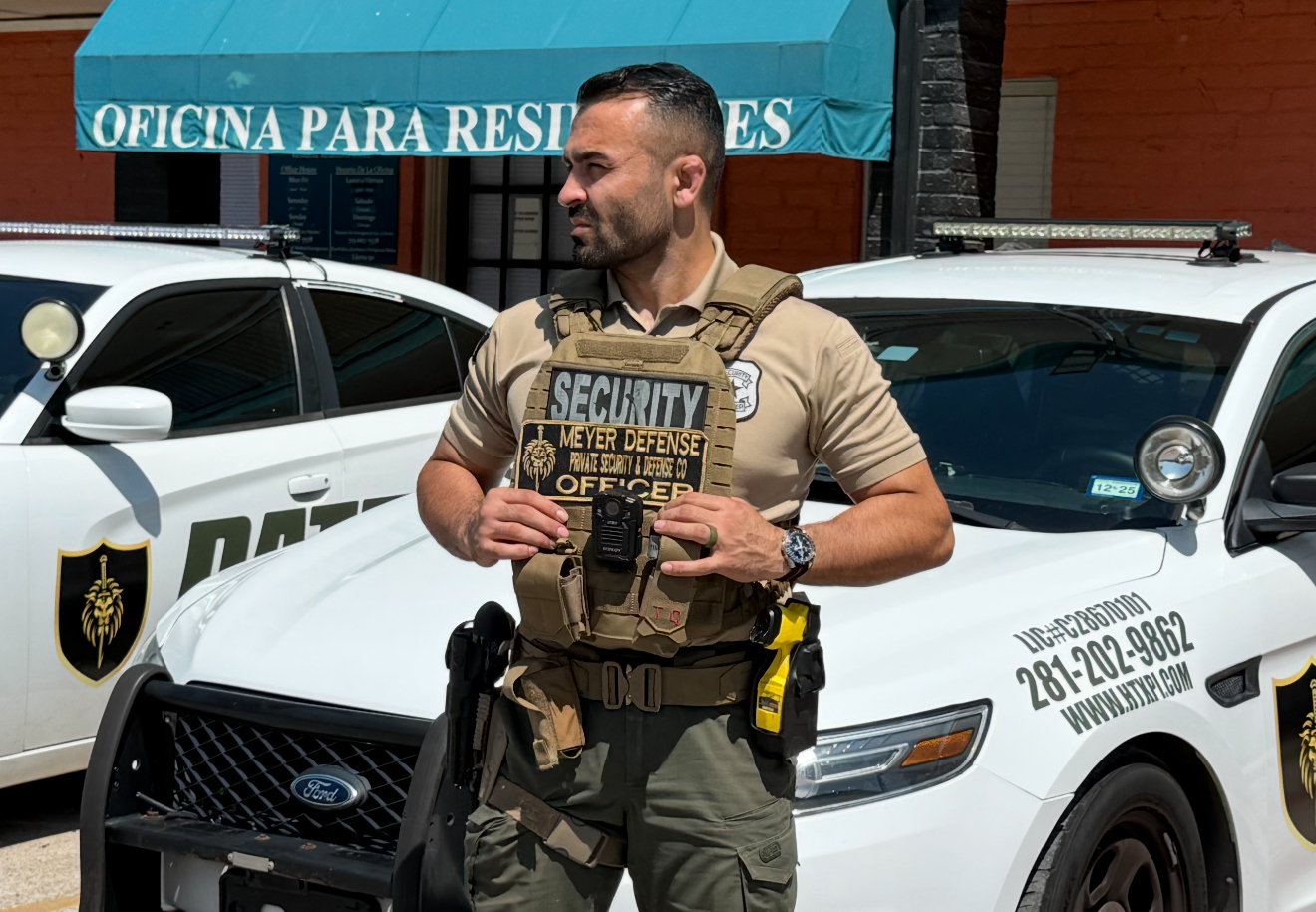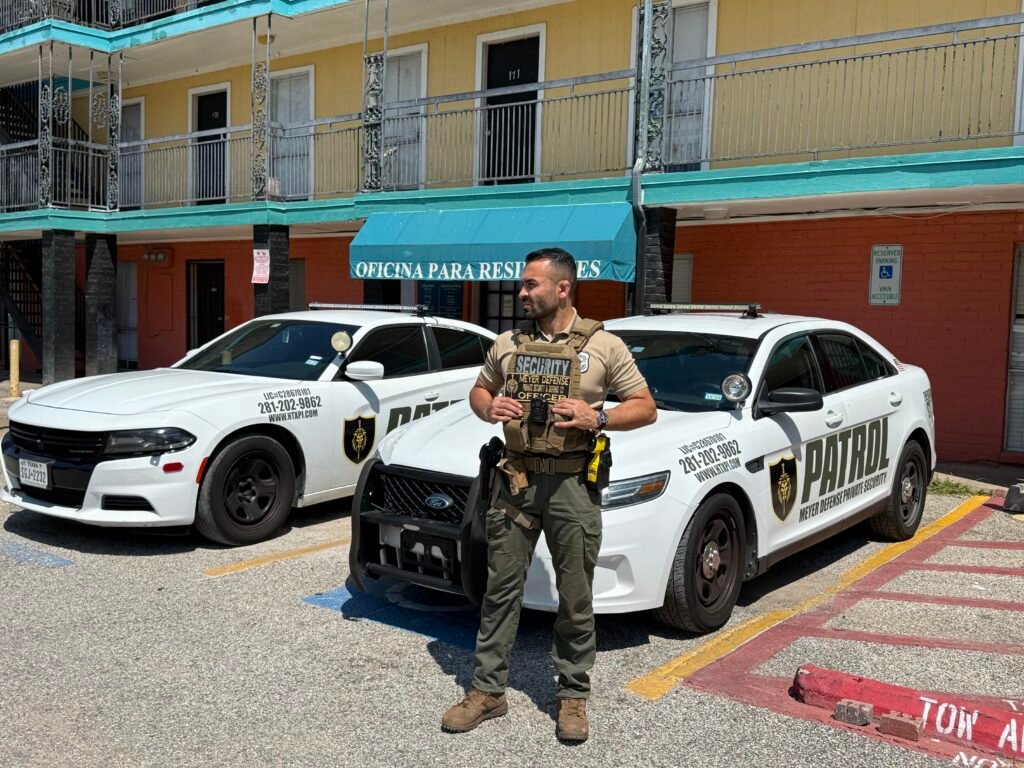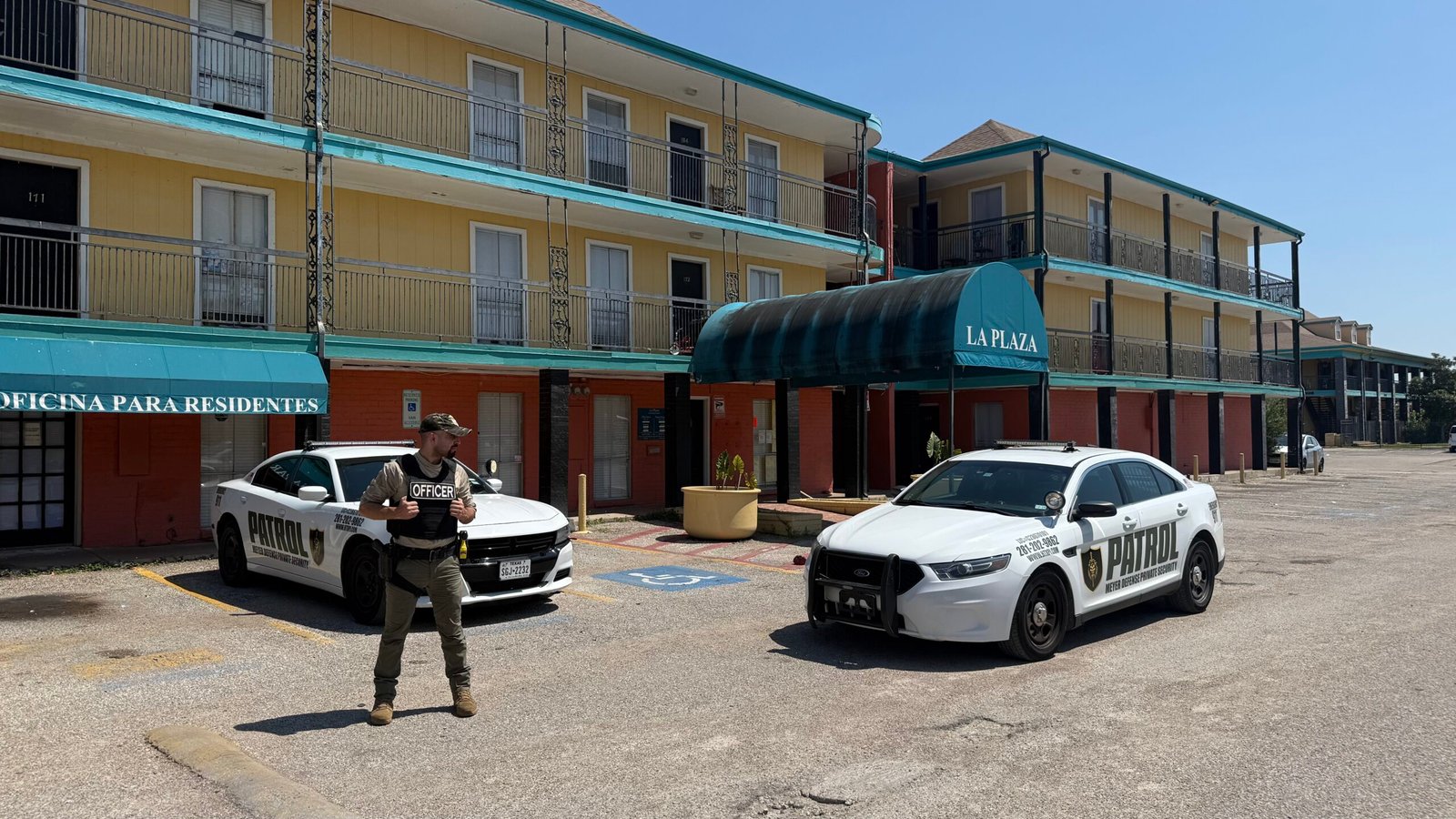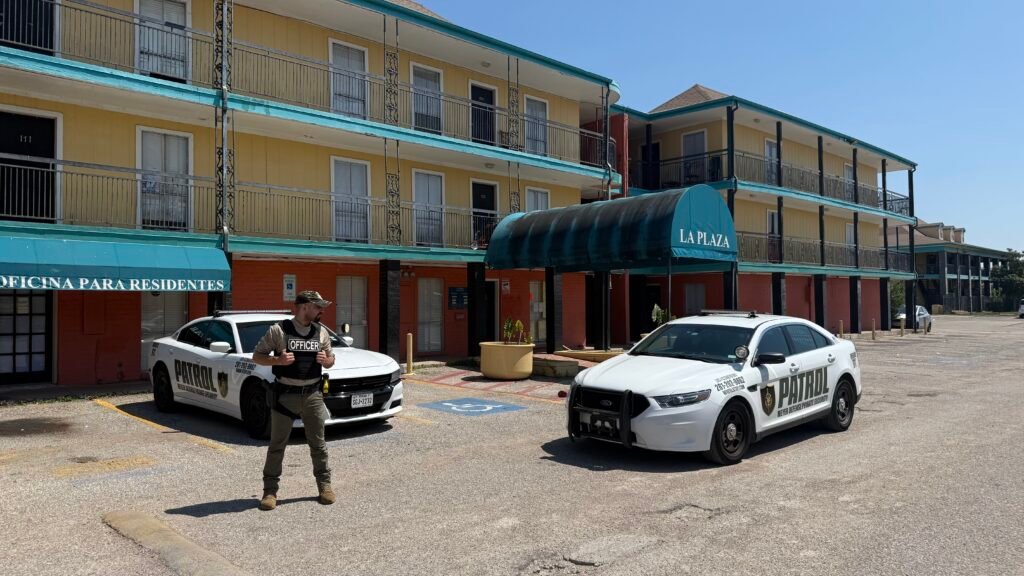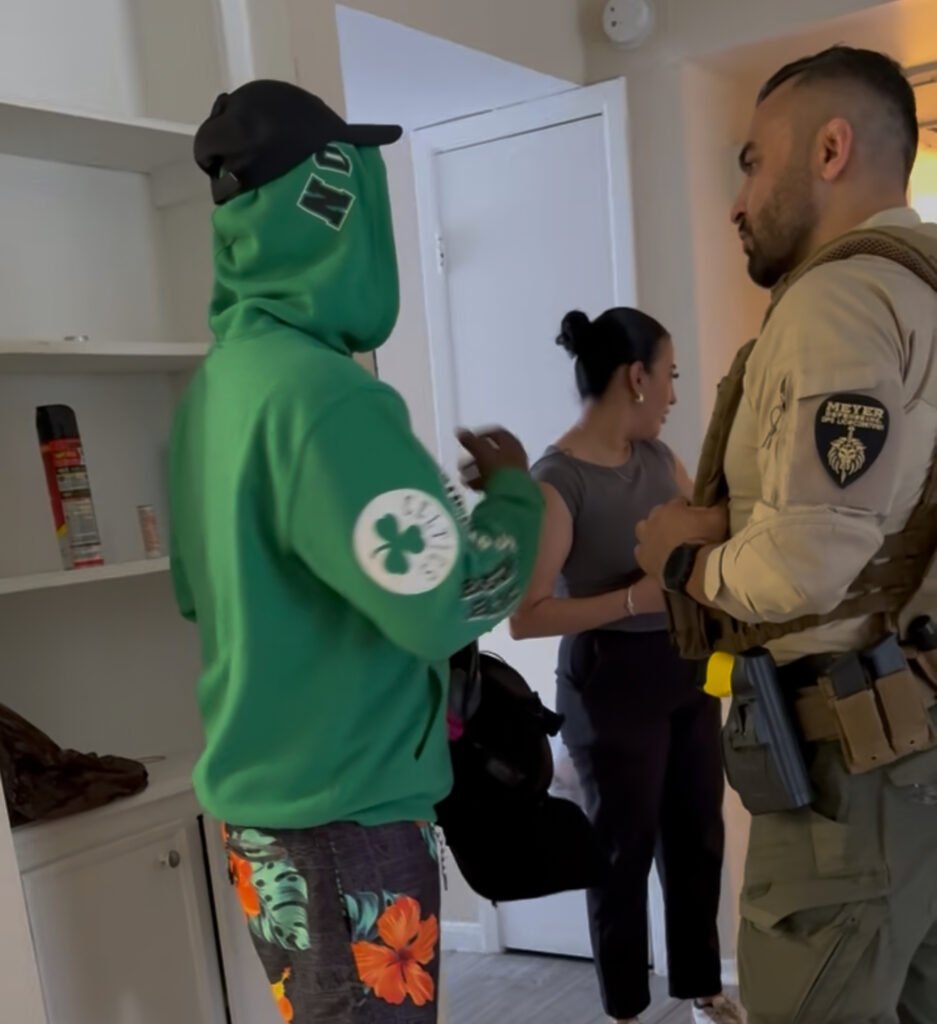
Workplace violence poses significant threats to employee safety and organizational stability, especially during high-risk employee terminations where tensions can escalate rapidly. This article delivers a strategic framework for integrating workplace violence prevention and specialized termination security measures, from risk assessments and legal compliance to training, threat management, and advanced software solutions. Readers will learn how to identify high-risk scenarios, build robust prevention plans, train staff in de-escalation techniques, assemble threat assessment teams, and leverage technology to enhance security. These comprehensive workplace violence prevention and termination security strategies not only protect people and assets but also safeguard reputation and ensure compliance with regulations like California SB 553 and the New York Retail Worker Safety Act.
What Is High-Risk Employee Termination Security Services and Why Is It Essential?
High-risk employee termination security refers to specialized measures that secure potentially volatile dismissal events by deploying trained security personnel and protocols, thereby minimizing threats to staff, assets, and corporate reputation. Organizations facing terminations of employees with a history of aggression, access to sensitive information, or signs of retaliation must adopt tailored security solutions to mitigate violence. By proactively planning escorts, surveillance, and emergency response coordination, businesses ensure that termination processes are conducted smoothly and safely without disrupting operations.
Security planning for these scenarios typically includes threat assessments prior to termination, controlled exit protocols, and post-termination monitoring to detect retaliation attempts. These steps not only reduce liability and compliance risk but also reinforce a culture of safety. Understanding what constitutes a high-risk termination clarifies when to deploy these protective measures.

What Defines a High-Risk Employee Termination?
A high-risk employee termination is any dismissal scenario where the departing individual exhibits behaviors or situational factors that elevate the likelihood of violent or retaliatory actions. Common risk indicators include:
- Documented WorkplaceConflicts – Employees with past aggressive incidents or disciplinary records.
- Access to Weapons or Sensitive Assets – Personnel who handle equipment or data that could be weaponized.
- Personal or Financial Stress – Situations involving domestic issues or financial disputes that may trigger violence.
- High-Visibility Roles – Executives or managers whose departure could impact major projects or expose vulnerabilities.
Recognizing these criteria ensures that organizations deploy security officers and protocols proportionally, preventing violence while preserving dignity for all parties involved.
How Does High-Risk Termination Security Protect Organizations?
High-risk termination security protects organizations by identifying threat vectors, deploying resources to deter violence, and maintaining operational continuity throughout the process. Security officers conduct pre-termination site surveys, coordinate with HR and legal teams, and monitor for warning signs, which directly reduces the chance of armed encounters or sabotage. By establishing secure routes, communication channels, and rapid response protocols, businesses can safeguard employees and property, uphold compliance with regulations, and maintain stakeholder confidence.
These measures further reinforce a perception of preparedness, discouraging potential aggressors and demonstrating a commitment to safety that resonates across the organization.
What Are the Legal Requirements for High-Risk Terminations?
Legal requirements for high-risk terminations mandate that employers assess potential violence risks and implement preventive measures in compliance with occupational safety laws, thereby avoiding penalties and litigation. Key regulations include:
| Legislation | Requirement | Effective Date |
|---|---|---|
| OSHA’s General Duty Clause | Employers must provide a workplace free from recognized hazards, including violence risk | Ongoing |
| California SB 553 | Mandates workplace violence prevention plans, risk evaluations, and training for healthcare and social services | July 1, 2024 |
| New York Retail Worker Safety Act | Requires violence prevention training and incident reporting in retail settings | March 2022 |
Legislative Frameworks for Workplace Violence Prevention: California SB 553 and New York Retail Worker Safety Act
California’s SB 553, effective July 1, 2024, mandates comprehensive workplace violence prevention plans for most employers, setting a precedent for state-level regulations. Similarly, the New York Retail Worker Safety Act, with key provisions effective June 2, 2025, requires retail employers to implement prevention policies, training, and hazard assessments to protect workers.
This citation verifies the legal requirements mentioned in the article, specifically California SB 553 and the New York Retail Worker Safety Act, highlighting their mandates for employers.
How Do Security Officers Support Safe Employee Terminations?
Security officers support safe employee terminations by conducting threat assessments, managing controlled access, and escorting exiting individuals to minimize confrontation risks. Their responsibilities include:
- Coordinating with HR to schedule discreet exit procedures.
- Monitoring surveillance systems for unusual activity.
- Establishing physical barriers and safe pathways.
- Providing immediate response to distress calls.
- Documenting all security actions for compliance records.
By serving as visible deterrents and rapid responders, security officers reduce tension, protect staff, and ensure that the termination process concludes without incident.
How Does Workplace Violence Risk Assessment Prevent Incidents?
A workplace violence risk assessment systematically identifies hazards and evaluates threat levels by analyzing environmental factors, employee behaviors, and past incidents, thereby enabling targeted prevention measures that reduce violent occurrences. Through structured vulnerability analysis and risk scoring, organizations can prioritize interventions—such as enhanced access controls or de-escalation training—for the most critical areas. This proactive approach integrates seamlessly with termination protocols to address risks before they materialize.
Implementing continuous risk assessments ensures that as employee profiles or workplace dynamics change, security solutions evolve in tandem to maintain a safe environment.
Methodological Considerations for Assessing Workplace Violence
Accurate assessment of workplace violence risk is crucial for establishing tailored prevention and protection measures. The risk management process involves sequential steps: risk identification, quantitative risk assessment, and impact assessment, often requiring systematic recording of violent events and targeted surveys to gather comprehensive data.
This citation directly supports the article’s section on how workplace violence risk assessment prevents incidents, detailing the systematic approach required.
What Are the Key Steps in Conducting a Workplace Violence Risk Assessment?
A comprehensive violence risk assessment follows a structured sequence to uncover hazards, evaluate vulnerabilities, and quantify risk levels, enabling data-driven mitigation strategies:
- Hazard Identification – Review incident records, facility layouts, and job roles to pinpoint violence triggers.
- Vulnerability Analysis – Examine security gaps, such as unmonitored entry points or lone-worker scenarios.
- RiskScoring – Assign numerical values to threat factors (e.g., past incidents, job stressors) to rank sites or roles.
- Control Selection – Propose tailored solutions—like panic alarms or security escorts—based on risk priority.
- Documentation and Reporting – Compile findings and recommendations in a formal report for leadership review.
Completing these steps fosters a clear roadmap for targeted prevention efforts, directly informing high-risk termination security planning.

How Does Legal Compliance Influence Risk Assessment?
Legal compliance influences risk assessment by embedding regulatory requirements—such as hazard evaluation protocols and training standards—into the process, thereby ensuring that prevention strategies satisfy both safety objectives and statutory mandates. For example, OSHA guidelines specify hazard recognition methods, while SB 553 and the New York Retail Worker Safety Act require documented risk analyses and employee education. Aligning assessment steps with these laws not only avoids penalties but also strengthens risk communication and employee engagement across the organization.
Meeting compliance benchmarks elevates the credibility of risk assessments and solidifies the foundation for comprehensive prevention programs.
Why Is Ongoing Risk Monitoring Critical After Termination?
Ongoing risk monitoring after termination sustains organizational security by detecting signs of retaliation or follow-up threats, enabling rapid intervention and continuous protection for remaining employees and assets. Post-termination activities include:
- Reviewing disgruntled communications or social media posts.
- Maintaining surveillance of former employees with known grievances.
- Updating access-control lists to revoke permissions immediately.
- Collaborating with local law enforcement on threat intelligence.
Continuous monitoring closes the loop on termination security and feeds insights back into violence prevention plans to forestall future incidents.
What Are the Essential Components of a Workplace Violence Prevention Plan (WVPP)?
A workplace violence prevention plan (WVPP) is a formal policy document that outlines procedures, roles, and resources to identify, report, and respond to violent behavior, thereby creating a safer work environment and reducing liability. Core components of an effective WVPP include:
- PolicyStatement and Scope clarifying organizational commitment.
- Roles and Responsibilities detailing management, security, and employee duties.
- Hazard Assessment Procedures defining methods for evaluating risks.
- Reporting Protocols establishing clear steps for incident notification.
- Threat Response and EmergencyProtocols coordinating actions during violent events.
- Trainingand Education ensuring staff recognize and defuse threats.
- Recordkeeping and Review maintaining incident logs and updating protocols.
Incorporating these elements produces a living document that aligns security, operations, and human resources under a unified prevention strategy.
How Is a Workplace Violence Prevention Plan Developed?
Developing a WVPP starts with a collaborative policy workshop and data gathering that defines scope, assigns ownership, and secures leadership buy-in, ensuring comprehensive coverage and employee engagement. Key development phases include:
- Conducting stakeholder interviews with HR, security, and legal teams.
- Gathering historical incident data and industry benchmarks.
- Drafting policy language and procedural workflows.
- Reviewing draft with frontline staff for practical feedback.
- Finalizing the plan and securing executive approval.
This participatory approach ensures that the WVPP reflects real-world conditions and gains broad support for successful implementation.
What Reporting Procedures Should Be Included in a WVPP?
Effective reporting procedures within a WVPP provide clear, confidential, and timely channels for reporting potential or actual violence, thereby accelerating response times and preserving evidence. Reporting protocols should include:
- Multiple Reporting Options – Email, hotline, anonymous dropbox, direct manager notification.
- Immediate Notification Guidelines – Criteria for emergency versus non-emergency reporting.
- Incident Log Maintenance – Standardized data fields for date, time, persons involved, and actions taken.
- Escalation Matrix – Defined thresholds for notifying security, HR, and law enforcement.
- Feedback Mechanisms – Confirmation to reporters and periodic updates on incident status.
Streamlined procedures increase reporting compliance and help organizations analyze trends for prevention improvements.
How Do Emergency Response Protocols Enhance Workplace Safety?
Emergency response protocols coordinate rapid, structured actions during violent or potentially violent events by defining command structure, communication channels, and evacuation strategies, thereby containing harm and restoring order. Key protocols include:
| Protocol | Purpose | Key Elements |
|---|---|---|
| Active Threat Response | Neutralize imminent violence | Panic alarms, lockdown procedures, safe rooms |
| Medical Emergency Support | Provide first aid and medical evacuation | Designated medics, AED stations, evacuation routes |
| Communication Plan | Ensure accurate information flow | Mass notification systems, chain-of-command |
| Evacuation and Shelter-in-Place | Guide staff to safety or secure areas | Floor wardens, assembly points, signage |
Clear emergency protocols empower employees and responders to act swiftly, reducing injury and confusion during crises.

Why Is Recordkeeping Important for Workplace Violence Prevention?
Recordkeeping is vital for workplace violence prevention because it maintains detailed incident data that inform trend analysis, compliance audits, and policy refinements, thereby strengthening future risk management. A robust recordkeeping system should capture:
- Incident descriptions, dates, and locations.
- Parties involved and witness statements.
- Response actions taken and resolution outcomes.
- Follow-up measures and plan updates.
Accurate records create an institutional memory that supports continuous improvement and satisfies legal documentation requirements.
How Does De-escalation and Conflict Resolution Training Reduce Workplace Violence?
De-escalation and conflict resolution training reduces workplace violence by teaching employees to recognize early warning signs, apply verbal and non-verbal techniques, and guide tense situations toward peaceful outcomes, thereby preventing escalation. Training programs blend theory with practice, covering empathy, active listening, and stress management, which enhance employee confidence and organizational resilience.
The Effectiveness of De-escalation Training in Mitigating Workplace Violence
Research indicates that de-escalation training significantly reduces incidents of workplace violence by equipping employees with skills to manage aggressive behavior and defuse tense situations. Studies in healthcare settings, for example, have shown that such training improves staff confidence and self-efficacy in handling aggressive individuals, leading to a decrease in violent incidents.
This research supports the article’s emphasis on de-escalation and conflict resolution training as a key component in reducing workplace violence.
What Verbal and Non-Verbal Techniques Are Taught in De-escalation Training?
De-escalation training covers specific communication methods and body language cues that defuse tension and foster cooperation, empowering staff to manage conflict effectively:
- Calm Verbal Framing – Using low, steady tone and open-ended questions.
- Empathetic Listening – Reflecting and validating feelings before offering solutions.
- Non-Threatening Posture – Maintaining neutral body language and safe distance.
- Mirroring and Pausing – Subtly matching speech pace and inserting strategic pauses.
How Does Situational Awareness Help Manage Aggressive Behavior?
Situational awareness helps manage aggressive behavior by training individuals to systematically observe environmental cues, recognize deviations from normal patterns, and anticipate potential threats, thereby enabling early intervention before conflicts escalate. Core situational awareness skills include:
- Scanning zones of vulnerability such as blind corners or unsecured entries.
- Noticing changes in posture, tone, or group dynamics.
- Applying risk-based decision models to determine the need for intervention.
- Communicating observations to security or supervisors in real time.
Developing these competencies reinforces the link between early detection and successful de-escalation efforts.
What Role Do Role-Playing Scenarios Play in Effective Training?
Role-playing scenarios immerse participants in realistic conflict situations, allowing them to practice de-escalation and resolution techniques in a safe environment, thereby enhancing skill retention and self-assurance. Effective role-play exercises:
- Simulate common workplace triggers (e.g., performance disputes, customer aggression).
- Provide structured feedback from trainers and peers.
- Encourage reflection on emotional responses and alternative approaches.
- Reinforce best practices through repetition and scenario variations.
By bridging theory and practice, role-playing solidifies competencies that directly reduce violence risks.
What Is the Role of Threat Assessment and Management in Workplace Violence Prevention?
Threat assessment and management serve as a proactive framework to identify, evaluate, and mitigate potential sources of violence by leveraging multidisciplinary expertise, thereby preventing incidents before they occur. A threat assessment team combines behavioral analysis, security insights, and legal guidance to develop tailored intervention strategies, ensuring that preventive measures address specific risks and comply with regulations.
Continuous collaboration among team members refines detection methods and intervention plans, reinforcing the organization’s preventive posture.
Who Comprises a Workplace Threat Assessment Team?
A workplace threat assessment team typically includes representatives from security, human resources, legal counsel, and mental health professionals, providing a comprehensive perspective on risk evaluation and intervention. Core team roles involve:
- SecurityOfficer – Analyzes physical and procedural vulnerabilities.
- HR Professional – Reviews personnel records and employee relations history.
- Legal Counsel – Ensures compliance with employment laws and privacy regulations.
- Behavioral Specialist – Assesses warning signs and recommends supportive interventions.
What Behavioral Indicators Signal Potential Violence?
Behavioral indicators of potential violence are observable changes in mood, communication, and actions that may signal escalating risk, enabling timely assessments and interventions. Common indicators include:
- Repeated hostile language or threats toward individuals or the organization.
- Intense fascination with weapons or violent events.
- Sudden withdrawal, neglect of personal appearance, or erratic work performance.
- Unexplained grievances or fixation on perceived injustices.
Documenting and sharing these observations with the threat assessment team triggers early support and deterrent measures.
How Are Intervention Strategies Developed and Implemented?
Intervention strategies are developed by analyzing threat assessment findings, selecting appropriate controls, and coordinating with stakeholders to implement measures that de-escalate risk and provide support. Key implementation steps:
- Strategy Design – Align controls (e.g., mediation, security escort) with severity of risk.
- Stakeholder Coordination – Engage managers, legal counsel, and health professionals.
- Communication Plan – Inform relevant parties while maintaining confidentiality.
- Execution and Monitoring – Deploy interventions and track effectiveness through metrics.
This structured approach ensures interventions are proportionate, legally sound, and continuously evaluated for improvement.
Why Is Post-Incident Review Important for Continuous Improvement?
A post-incident review systematically analyzes the root causes and response actions of a violent event, highlighting strengths and revealing gaps, thereby informing updates to prevention plans and training curricula. Review activities include:
- Collecting feedback from responders, witnesses, and management.
- Comparing actual response timelines against protocol benchmarks.
- Identifying procedural breakdowns or resource shortfalls.
- Updating risk assessments and WVPP policies based on lessons learned.
These insights drive iterative enhancements, ensuring the organization’s preparedness evolves alongside emerging threats.

How Can Workplace Violence Prevention Software Enhance Security Solutions?
Workplace violence prevention software centralizes incident reporting, risk analysis, compliance management, and trend analytics into a unified platform, thereby improving decision-making speed and accuracy while reducing administrative burdens. By automating data collection, triggering alerts, and providing dashboards, these digital tools empower security teams to allocate resources strategically, comply with legal mandates, and identify emerging risks before they escalate into incidents.
Software integration strengthens the entire prevention lifecycle, from initial risk assessment to post-incident review.
What Features Do Incident Reporting Platforms Offer?
Incident reporting platforms offer multi-channel intake, structured data capture, and automated notifications, ensuring that potential threats are documented accurately and addressed promptly. Typical features include:
- Configurable forms for various incident types.
- Anonymous reporting options to encourage disclosure.
- Role-based access controls for sensitive data.
- Automated escalation workflows to involve appropriate stakeholders.
How Do Risk Analysis Tools Support Decision-Making?
Risk analysis tools support decision-making by aggregating data points—such as incident frequencies, risk scores, and environmental factors—and visualizing them in dashboards that highlight priority areas. Core functionalities include:
- Risk heatmaps to identify high-exposure zones.
- Scenario modeling to project potential outcomes.
- Scoring algorithms that weight risk factors consistently.
- Custom report generation for audits and leadership briefings.
How Does Compliance Management Software Aid Legal Adherence?
Compliance management software aids legal adherence by tracking training completion, policy acknowledgments, and audit schedules, ensuring that regulatory requirements are met and documented. Key modules comprise:
- Policy libraries with version control.
- Training assignment and certification tracking.
- Automated reminders for reassessments and plan renewals.
- Centralized storage of compliance evidence.
What Insights Can Data Analytics Provide on Workplace Violence Trends?
Data analytics provide insights on incident patterns, vulnerability correlations, and intervention outcomes by transforming raw data into actionable intelligence, enabling organizations to refine prevention strategies and resource deployment. Analytic outputs typically include:
| Trend Analysis | Description | Application |
|---|---|---|
| Incident Frequency | Counts of violent events over time | Identify spikes and investigate causes |
| Location Hotspots | Geographic mapping of incident occurrences | Adjust security patrols and staffing |
| Behavior Correlations | Links between stressors (e.g., layoffs) and incident rates | Tailor support programs and training |
| Response Time Metrics | Average time from report to resolution | Optimize emergency protocols |
These insights drive continuous improvement and ensure that prevention efforts are data-driven.
What Are the Long-Term Benefits of Implementing Comprehensive Workplace Violence Prevention and Termination Security?
The long-term benefits of comprehensive workplace violence prevention and termination security include sustained employee well-being, reduced liability costs, improved compliance posture, and enhanced brand reputation, thereby delivering measurable returns on security investments. Organizations that embed prevention into their culture experience fewer disruptions, higher morale, and stronger stakeholder trust, translating into improved productivity and retention.
A holistic approach aligns security, HR, and operations to create a resilient and proactive safety ecosystem.
How Does Prevention Improve Employee Safety and Morale?
Prevention improves employee safety and morale by demonstrating organizational commitment to well-being, fostering a culture of trust, and reducing anxiety about potential violence. When staff see clear policies, training programs, and security measures in place, they feel valued and empowered. Key enrichment factors include:
- Regular safety communications and drills.
- Visible security presence and support.
- Open channels for reporting concerns.
- Recognition of employees who contribute to a safe environment.
This positive workplace culture sustains engagement and boosts overall performance.
What Are the Financial Impacts of Reducing Workplace Violence?
Reducing workplace violence lowers direct and indirect costs—such as medical expenses, legal fees, turnover, and productivity losses—by preventing incidents that would otherwise result in costly claims and operational disruptions. Typical financial impacts include:
| Cost Category | Impact | Example |
|---|---|---|
| Medical and Legal | Decreases in compensation claims and lawsuits | Savings from avoided workers’ compensation |
| Absenteeism | Reduced lost workdays due to injury or stress | Fewer sick days and overtime payouts |
| Recruitment and Training | Lower turnover replacement costs | Retention of experienced personnel |
| Insurance Premiums | Decreased liability insurance rates | Lower premiums following safety accreditation |
How Does Compliance Protect Organizational Reputation?
Compliance protects organizational reputation by ensuring that policies and actions align with legal and ethical standards, demonstrating to employees, clients, and regulators that safety is paramount. Visible adherence to laws like SB 553 and industry best practices builds credibility, reduces negative publicity, and attracts talent. Consistent compliance reporting and third-party certifications further cement trust and distinguish the organization as a leader in workplace safety.
This reputational capital promotes stakeholder loyalty and market differentiation.
What Case Studies Demonstrate Successful High-Risk Termination Security?
Case studies of successful high-risk terminations illustrate how structured security protocols and collaborative planning prevent violence and maintain operational integrity. Notable examples include:
- A healthcare provider that used advanced threat assessment and on-site security escorts to manage a mentally unstable staff dismissal without incident.
- A retail chain that integrated de-escalation training with patrol monitoring during store closures, averting property damage during employee layoffs.
- An executive transition in a financial services firm that combined compliance software alerts and coordinated vehicle escorts to ensure a risk-free exit.
Comprehensive workplace violence prevention and specialized high-risk termination security work hand in hand to create safer environments, reduce costs, and preserve organizational reputation. By integrating thorough risk assessments, robust prevention plans, targeted training, expert threat management, and cutting-edge software, businesses can anticipate and neutralize threats before they materialize. Investing in these end-to-end solutions not only complies with legal mandates but also fosters a culture of safety that empowers employees and supports long-term success.


